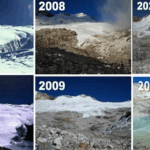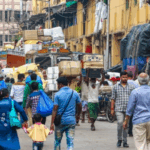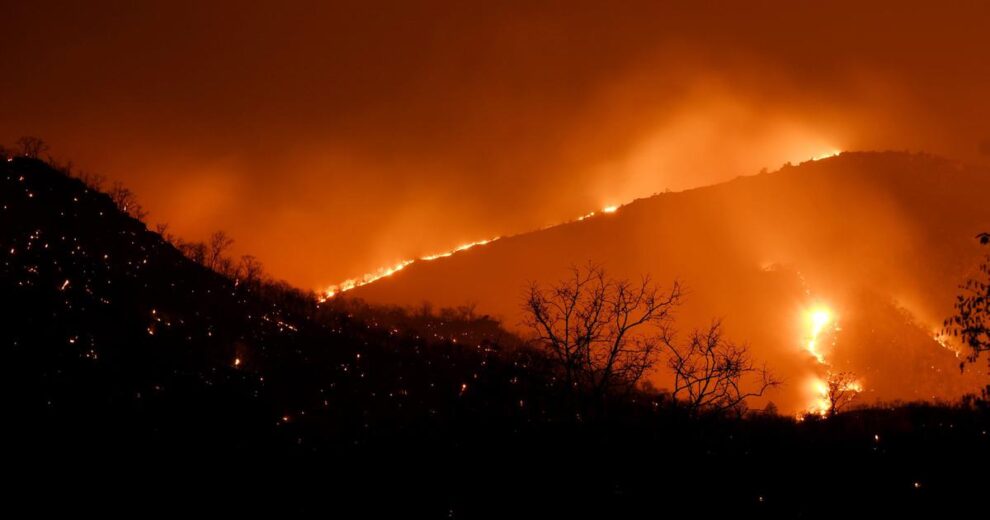EXTREME HEAT GRIPS CHINA
From The New York Times
————
“Shanghai sweltered yesterday. At the Chengdu Zoo and the Shanghai Zoo, animals were given slices of watermelon and bite-size ice treats.Aly Song/Reuters
From The New York Times
————
“Shanghai sweltered yesterday. At the Chengdu Zoo and the Shanghai Zoo, animals were given slices of watermelon and bite-size ice treats.Aly Song/Reuters
Extreme heat grips China
Parts of China’s east and south withered under extreme temperatures as dozens of cities issued heat alerts yesterday. Some temperature forecasts exceeded 40 degrees Celsius (104 degrees Fahrenheit).
The heat waves melted the roofs of buildings and buckled roads in dozens of cities, as people to sought cool air in air-raid shelters underground.
China’s quest to stamp out Covid-19 outbreaks remained undiminished. Health workers in hazmat suits persisted in administering a round of mandatory coronavirus tests, despite the bracing heat. One video showed a health worker in Henan succumbing to heat stroke as his colleagues fanned him with packaging from test kits.
What’s next: The heat wave is forecast to persist for at least two weeks.
Data: Mortality related to excess heat rose in China by 400 percent between 1990 and 2019, reaching 26,800 deaths in 2019.
Context: The scorching heat reflects a global trend of increasingly frequent extreme weather driven by climate change. In June, weeks of heat waves plagued northern China, as floods displaced millions of people in the central and southwestern parts of the country.”
Parts of China’s east and south withered under extreme temperatures as dozens of cities issued heat alerts yesterday. Some temperature forecasts exceeded 40 degrees Celsius (104 degrees Fahrenheit).
The heat waves melted the roofs of buildings and buckled roads in dozens of cities, as people to sought cool air in air-raid shelters underground.
China’s quest to stamp out Covid-19 outbreaks remained undiminished. Health workers in hazmat suits persisted in administering a round of mandatory coronavirus tests, despite the bracing heat. One video showed a health worker in Henan succumbing to heat stroke as his colleagues fanned him with packaging from test kits.
What’s next: The heat wave is forecast to persist for at least two weeks.
Data: Mortality related to excess heat rose in China by 400 percent between 1990 and 2019, reaching 26,800 deaths in 2019.
Context: The scorching heat reflects a global trend of increasingly frequent extreme weather driven by climate change. In June, weeks of heat waves plagued northern China, as floods displaced millions of people in the central and southwestern parts of the country.”From The New York Times
————
“Shanghai sweltered yesterday. At the Chengdu Zoo and the Shanghai Zoo, animals were given slices of watermelon and bite-size ice treats.Aly Song/Reuters
Extreme heat grips China
Parts of China’s east and south withered under extreme temperatures as dozens of cities issued heat alerts yesterday. Some temperature forecasts exceeded 40 degrees Celsius (104 degrees Fahrenheit).
The heat waves melted the roofs of buildings and buckled roads in dozens of cities, as people to sought cool air in air-raid shelters underground.
China’s quest to stamp out Covid-19 outbreaks remained undiminished. Health workers in hazmat suits persisted in administering a round of mandatory coronavirus tests, despite the bracing heat. One video showed a health worker in Henan succumbing to heat stroke as his colleagues fanned him with packaging from test kits.
What’s next: The heat wave is forecast to persist for at least two weeks.
Data: Mortality related to excess heat rose in China by 400 percent between 1990 and 2019, reaching 26,800 deaths in 2019.
Context: The scorching heat reflects a global trend of increasingly frequent extreme weather driven by climate change. In June, weeks of heat waves plagued northern China, as floods displaced millions of people in the central and southwestern parts of the country.”


















